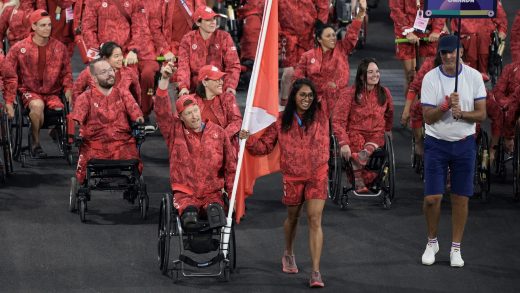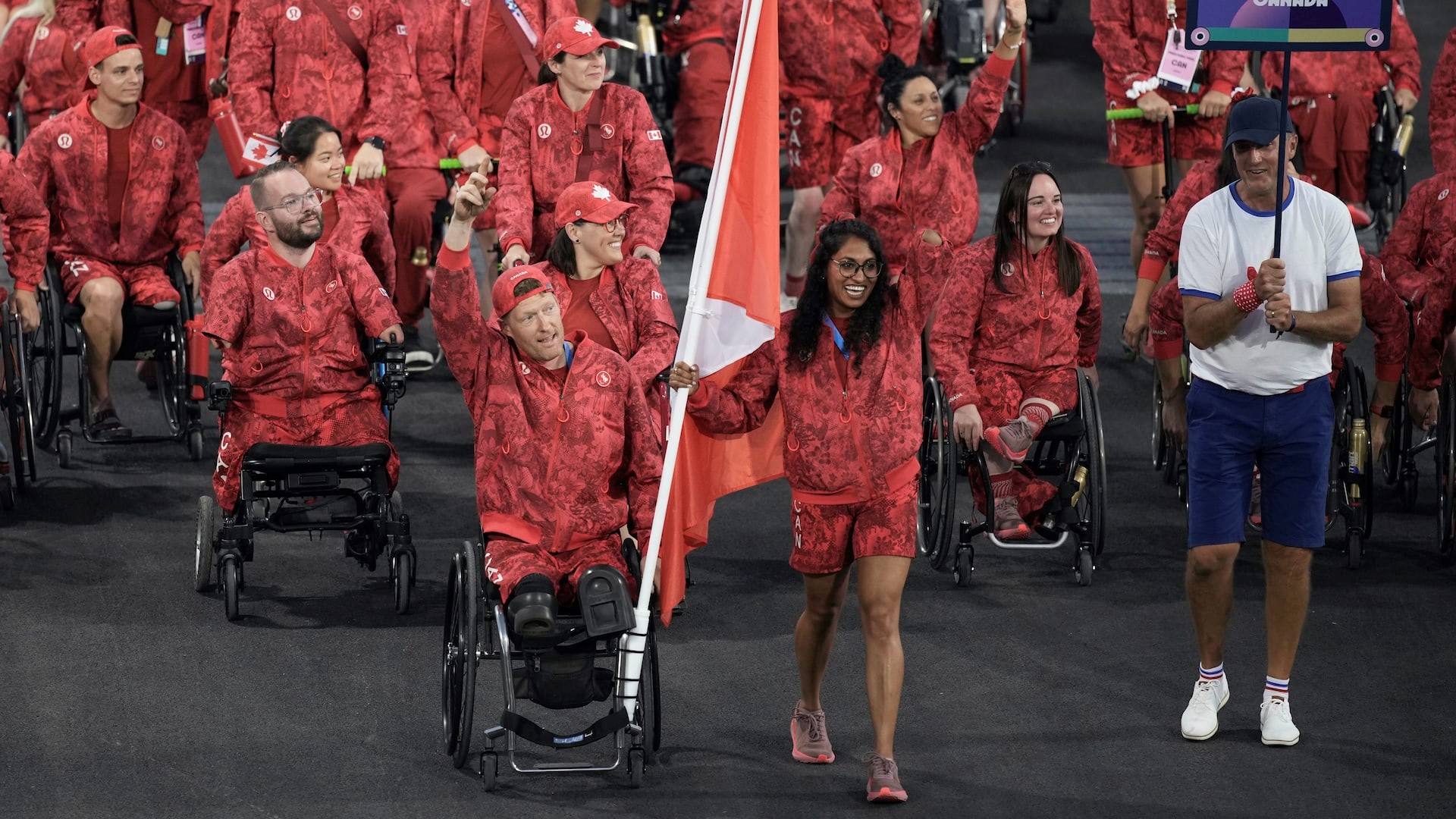How Paralympians’ fashion in Paris is embracing inclusive design
How Paralympians’ fashion in Paris is embracing inclusive design
Alison Brown, a podcaster who has been covering Olympics for years, says this Olympic cycle is the first where she has seen signs of adaptive fashion taking hold.
Three years ago, when Team Canada appeared at the opening ceremonies of the Tokyo Olympics and Paralympics, the athletes were dressed in sleek white jeans. They may have looked good, but for some Paralympians on the team, the outfits were a challenge.
For Alison Levine, for example. The para athlete, who competes in the sport of boccia, couldn’t wear jeans because in a wheelchair, they dug into her skin. They lacked an elastic waistband, and were difficult to take on and off.
“There was no way I was getting those on,” says Levine, who had to go find something else herself that would work, and not look too different. “You don’t want to look different because of your disability,” Levine says. “You don’t want it to be, ‘Team Canada plus you guys.’”
Things are different this year. At the Paralympics opening ceremony in Paris, Levine and teammates wore bright red jackets with features like magnetic closures that make it easier for everyone, disabled or not. And there was an option of a seated carpenter pant that was designed with Levine in mind—even called the “Alison pant.”
Levine sees the design process, in which apparel company Lululemon started interviewing her and others for guidance three years ago, as a meaningful advance not only in Olympics attire but in the broader area of what’s known as adaptive or inclusive fashion, in which fashion labels are starting—albeit slowly—to respond to the needs of disabled people, and recognize that they’re an important economic force.
“Listen, people want to look good,” says Levine, 34, who has a degenerative neuromuscular disorder. “It doesn’t matter if you’re disabled or not. A lot of the time when you’re disabled, you have to sacrifice your looks for what works for you, or for comfort. But the disability movement is getting bolder and stronger and saying that we’re not going to accept these things anymore.”
Levine recognizes that she and her Canadian teammates are among the luckier ones, and that most athletes don’t have the luxury of a major apparel company designing their kits and reaching out for guidance. Lululemon, which has a four-Games deal with Team Canada, designed all outfits for Olympians and Paralympians outside the field of play: for opening and closing ceremonies, village wear, medal ceremonies, media appearances, and travel.
Audrey Reilly, creative director for Team Canada at Lululemon, says she was shocked to find out that Levine mostly wore medical scrubs, for ease and comfort, when training or competing. That led to new designs for both sitting and standing athletes. “All the athletes want to look the same,” says Reilly. “They want to feel the same.”
The garment she called the “Alison pant” has pockets at the shins, so an athlete in a wheelchair can easily access them. Levine says it was “insane” to hear that a garment was named after her, but mostly she was happy that she could wear what others were wearing: “You feel like you’re really part of the team.”
Alison Brown, a podcaster who has been covering Olympics for years, says this Olympic cycle is the first where she has seen signs of adaptive fashion taking hold. She was struck by both the Lululemon kit reveal in the spring and the Nike reveal for Team USA, in which there were models in wheelchairs or with prosthetics.
“It’s so simple, yet so impactful,” says Brown—who also points out that most teams don’t have the resources or the institutional setup, like Team USA and Team Canada, where Olympians and Paralympians are part of the same structure.
To Mindy Scheier, who’s been advocating for better clothing options for the disabled for more than a decade, it’s no surprise that 2024 is the year the issue became visible at the Olympics—not to mention in Paris, a world capital of fashion.
“The paradigm has shifted, and brands are really starting to see this as a business opportunity,” Scheier says. “The momentum has absolutely trickled down to the Olympics and Paralympics because there has been such a breakthrough in the industry.”
Scheier began her advocacy work a decade ago when her 8-year-old son, born with muscular dystrophy, wanted to wear jeans to school rather than sweatpants. She couldn’t find any options. A fashion designer herself, Scheier formed a foundation and consulting agency and works with design labels and retailers to embrace adaptive fashion.
Ten years ago she had no partners; she now has many, from a high-end label like Tommy Hilfiger, which has its own adaptive line, Tommy Adaptive; to Target, Victoria’s Secret, and others. Scheier’s foundation, Runway of Dreams, will be mounting a show this month at New York Fashion Week featuring some 60 models with varying disabilities.
“This is a vocal population, and it wants to be considered a consumer,” says Scheier.
Jessica Long counts herself a fashion fan. A long-dominant para swimmer for Team USA, Long, 32, is now competing in her sixth Paralympics—she began winning gold medals at age 12. As a double amputee, one of the hardest things for her growing up, she says, was finding shoes that would work for her prosthetics.
“There’s not many things in my life that make me feel very disabled, but shoe shopping, and clothes shopping in general, has always been the hardest,” she says.
It got easier as she grew older and more confident. But she says finding shoes is still the biggest challenge: “What people might not think about is that shoes can completely throw off my walking . . . if they’re too heavy.”
She’s grateful that the U.S. Olympic and Paralympic Committee and sponsor Ralph Lauren, which designed opening and closing ceremony wear, surveyed the para athletes a year ago, asking what works best.
“I’ve seen so much improvement in the mobility for us,” Long said in an interview ahead of the Paralympics. “It’s those little pieces that mean the most, I think, to the para athletes. I think it’s going to be really exciting when we all dress up.”
—Jocelyn Noveck, Associated Press national writer
(11)



